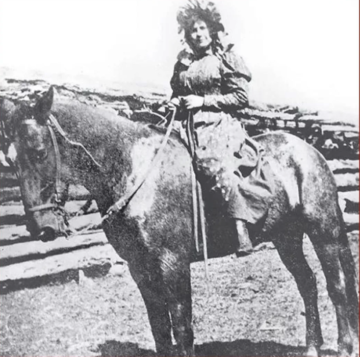by Mark Harvey
In the afternoon I went to where my Ella was strangled to death, and saw the limb of the tree over which the rope was thrown. The bark is abraided and plainly shows the mark of their fiendish work.—Thomas Watson, 1889

In western newspapers from the late 19th century and early 20th century, it’s clearly evident that “justice” was often summary without any form of trial. The sentences meted out for crimes, real or imagined, often involved a rope. On the front page of the July 30, 1889, Delta Independent, a Colorado newspaper still operating today, there’s a story titled “A cattle thief and his paramour hung from a cottonwood.” The “paramour” was one Ella Watson described in the paper as “…a woman of notorious character, a dead shot with a rifle, and of revengeful disposition….” The “cattle thief” was Jim Averill, a store owner, notary, justice of the peace, surveyor and partner of Watson.
The story describes the Wyoming couple as notorious and successful cattle thieves. Clearly sympathetic to the vigilantes, it reads,
Last evening about twenty of the most respectable and law-abiding people of the Sweetwater Valley met near Averill’s Ranch. Averill and the woman were secured. A short hearing was given them and they protested that the calves in the pasture were brought from Nebraska. This was disproved without further parley. Ropes were placed around their necks and thrown over the limbs of a spreading cottonwood.
Whether or not Averill and Watson were the thieves claimed by the vigilantes is of some dispute and will never be proven one way or the other. But Tom Rea’s excellent book Devils Gate, Owning the Land, Owning the Story casts real doubt on the issue and suggests that Averill and Watson were just small landowners, general store operators, and aspiring ranchers who got in the way of bigger players. The two had applied for a marriage license in Lander, Wyoming, but it’s uncertain whether or not they were ever legally married. Read more »
